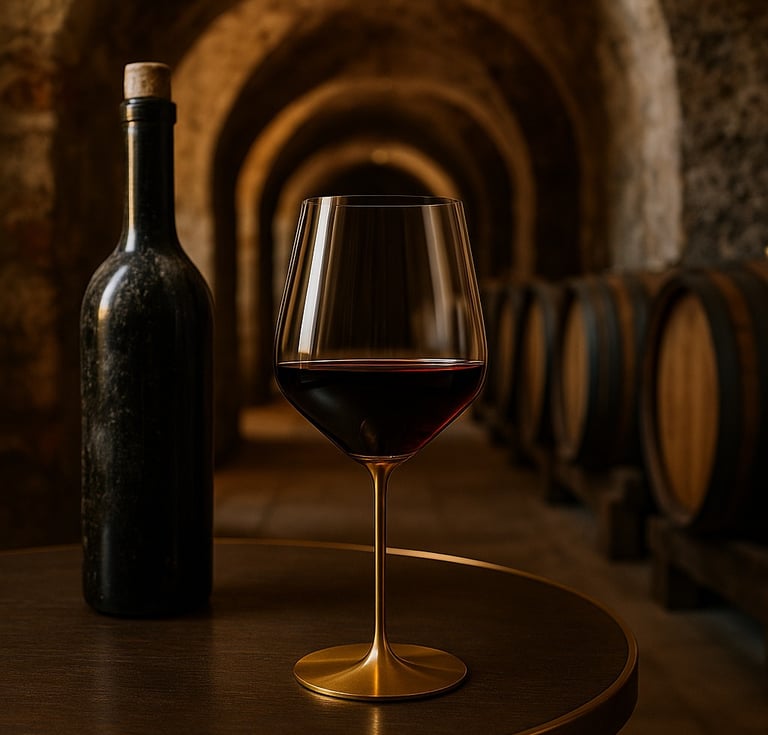
The Art of Ageing
Lessons from Wine for Luxury Brands
7/10/2025


Introduction: Time Does Not Wear Out — It Reveals
In the universe of luxury, the relationship with time is unique. While many industries race after the new, true luxury finds strength in maturation, in stillness, in the ability to age with elegance.
Wine has taught us this better than anything.
Each bottle that improves over the years, each label that gains character with the passage of time, reminds us that real value cannot be rushed — it is cultivated.
Luxury brands have much to learn from wine when it comes to building legacy.
Time as Value, Not as Urgency
In an era that rewards speed, luxury proposes the opposite: time, patience, contemplation. Fine wine meant for ageing does not compete in immediacy. Its merit lies in resisting the temptation to be rushed, in trusting the process.
In the same way, luxury brands must not obsess over the “latest trend” but focus on what endures. The truly influential maisons don’t launch products — they build memories.
Consistency: The Great Invisible Asset
The great wines that age well do not do so by chance. They succeed thanks to decisions made with vision, respect for origin, and technical mastery.
Likewise, the brands that consolidate their prestige do so through aesthetic, narrative, and strategic coherence.
Over the years, they may adapt, but never betray themselves.
And that, in a world saturated with noise, creates trust.
A brand that knows how to age is one that has resisted the temptation of shortcuts.
Maturation and Rarity: True Luxury Is Not in the New, but in the Refined
In the world of wine, what is truly valuable is not the young, but the refined. A great mature wine moves us not because it’s new, but because of its depth. Time, far from wearing it out, becomes texture, layers, resonance.
In the same way, the most admired luxury brands have managed to incorporate maturation as part of their value proposition.
Dom Pérignon (France) is a paradigm case: Its P2 and P3 editions don’t just age — they engage in dialogue with time. Each release represents a new stage of sensory development. The maison doesn’t sell vintages, it offers chapters of the same story, with unique aesthetics, discourse, and emotion. Here, time is a central argument.
Vega Sicilia (Spain) takes this philosophy to the extreme of coherence: It does not release wines according to the commercial calendar, but only when the vintage is deemed to have reached its peak expression. This wait — silent, patient, convincing — creates a powerful effect: the client feels part of a brand that refuses to be rushed, that knows when to speak and when to remain silent. At Vega Sicilia, waiting becomes a symbol of respect.
And if we look beyond wine, the luxury world offers a masterful example:
Hermès (France) doesn’t follow trends — it creates legacy. Its current collections coexist with pieces designed two decades ago. There is a visual and conceptual continuity that communicates permanence. That is precisely what a well-communicated fine wine for ageing can achieve: to become part of the consumer’s emotional timeline.
Concrete Lessons for Brands That Want to Endure
Invest in long-term narrative, not just seasonal campaigns.
Build products that withstand the test of time — aesthetically and conceptually.
Value your community’s loyalty and memory: that’s the gold of emotional branding.
Don’t fear ageing. Fear leaving no trace.
Conclusion: Ageing Well Is an Art — and a Strategy
Wine reminds us that time is an ally, not an enemy. Brands that understand this will transcend trends, generations, and shifting contexts. In true luxury, what endures moves us more than what dazzles. And in wine — as in great brands — time does not diminish: it reveals.

